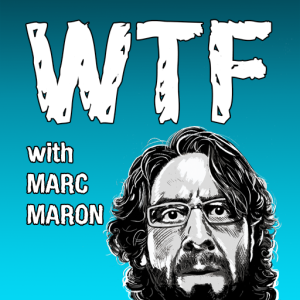As an avid podcast listener, it’s not lost on me how deeply the brands that sponsor or advertise on my favorite shows penetrate my consciousness.
When looking to build my own website, the first platform I visited was Square Space, which has invested so much of its marketing budget in podcasting that at this point it seems like it’s sponsoring my inner monologue. And anyone who’s listened to the deservingly celebrated podcast “Serial” knows how to properly mispronounce Mail Chimp.
TV ads, on the other hand, are hit-or-miss for my occasionally challenged memory, often leaving me saying things like: “Have you seen that hysterical PuppyMonkeyBaby commercial yet?… Uh no, I have no idea what brand it’s for.”

The podcasts I frequent all employ host-read dialogue for their advertisements, with many working hard to pump up the brands in creative, thoughtful ways. And even if I wanted to fast forward through the promotions it’d take more work than it’s worth for me. People choose the podcasts they plug into based on who the hosts are. That voice is just as important as the content they’re sharing, so hearing about brands from them tends to really resonate with me.
And many podcasts also feel — and in many cases are — homegrown, the result of one person’s or a small group of people’s vision and talent. That’s something listeners want to get behind. For example, when comedian Marc Maron promoted Justcoffee.coop on his show “WTF,” he used an expletive-ridden tagline for the brew every time he mentioned it. It was actually off-putting, but I clicked on the coffee’s website anyway because I wanted to support Maron.
Internal surveys of 300,000 listeners by Midroll Media, the podcast advertising company that’s also home to the Earwolf podcast network (including humor shows such as “Comedy Bang! Bang!” and “Sklarbro Country”) found that 63 percent had purchased something advertised by a host on the show, Fast Company reported in 2014. That’s a big number, but it doesn’t shock me.
While doing some research on the podcast industry for RoseComm, I spoke with Erik Diehn, Midroll’s vice president of business development. Here are a few takeaways from our conversation and my other research:
- All shapes and sizes. Midroll represents about 200 shows, some its own and some independent, including “The Bill Simmons Podcast” and the aforementioned “WTF.” Maron’s show, for example, earns about 550,000 downloads for each episode over an eight-week period of measurement. 5by5, which produces podcasts for “geeks, designers, developers and entrepreneurs,” draws anywhere from 1,000 – 50,000 listeners for its almost 25 shows
- Price of admission. Ad prices are generally $20-$25 cost per thousand (CPM) at Midroll, though this can vary due to placement (pre-roll, at beginning of show, mid-roll or post-roll; audience size; inventory, etc.). I’ll do the math for you: running an ad/sponsorship on a show that draws 100,000 downloads would cost $2,500 per episode at the high end of that range. Radiotopia, the 10-podcast arm of Public Radio Exchange, says its sponsorship segments average $18-$25 CPM. A 60-second mid-roll spot on 5by5’s tech podcast “Amplified” costs $600 per episode, reaching 10,000-15,000 downloads
- Identifying listeners. Matching advertisers and podcasts is a little bit more “high touch” than traditional advertising because of the way Midroll can identify consumers using several different methods, Diehn said. Midroll requires its shows to put out a call-to-action survey to listeners that helps generate demographic data. Knowing that they can expect a certain percentage of responses, they also use these survey responses to determine whether download statistics are accurate. If a podcast’s distribution network claims a podcast is getting 200,000 downloads but only 12 people respond to a survey, they know something isn’t right. It’s helped them determine which distribution platforms are most reliable
- Location, location, location? Midroll uses several methods to track data, though geo-tracking isn’t one of them because the capability “isn’t really there yet,” Diehn said
- Branded content. Both Midroll and Gimlet Media, the podcast network founded by former “This American Life” producer Alex Blumberg, now have separate departments that use the companies’ narrative abilities to develop branded content. And mainstream success is possible for such efforts. For example, GE’s sci-fi podcast “The Message,” co-produced by podcasting company Panoply, went to No. 1 on the iTunes charts last year. It’s impossible to quote rates for branded content, said Diehn, because there are so many variables associated with production. Some shows are simple conversations with hosts, others highly produced narratives that require significant reporting and editing efforts.
- Broadcaster input. Podcasts that work with Midroll and many other networks have the freedom to determine who they’ll allow as advertisers and how many ads they run in their shows
According to the Gimlet podcast “Sampler,” a podcast about other podcasts, there are 300,000 from which listeners can choose, and the show examines those 299,900 that people aren’t talking about in their local coffee shop. I haven’t spent much time looking for hidden podcast treasures, though I plan to. How do you know a podcast is the right fit for your brand? Investing in established audiences might be the way forward, but you may also do well to look for a lesser-known podcast that aligns with your marketing strategy and sensibility, getting aboard before people start making podcasts about that podcast.

